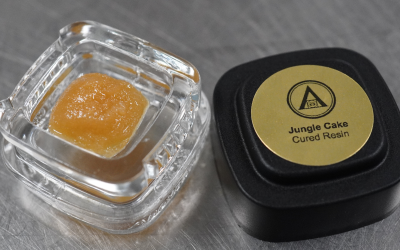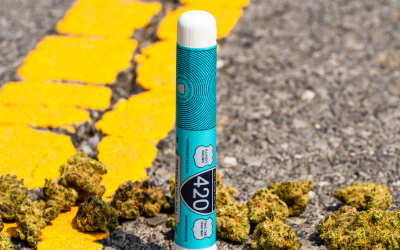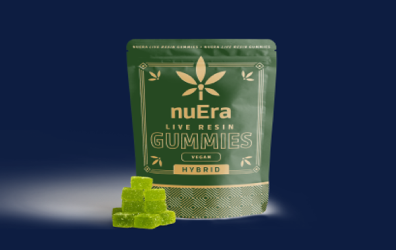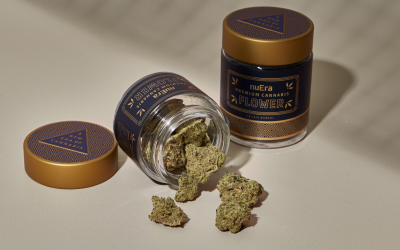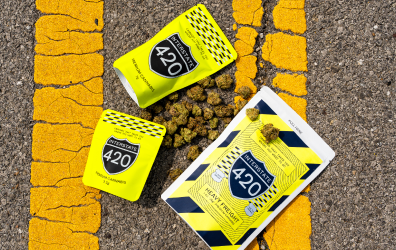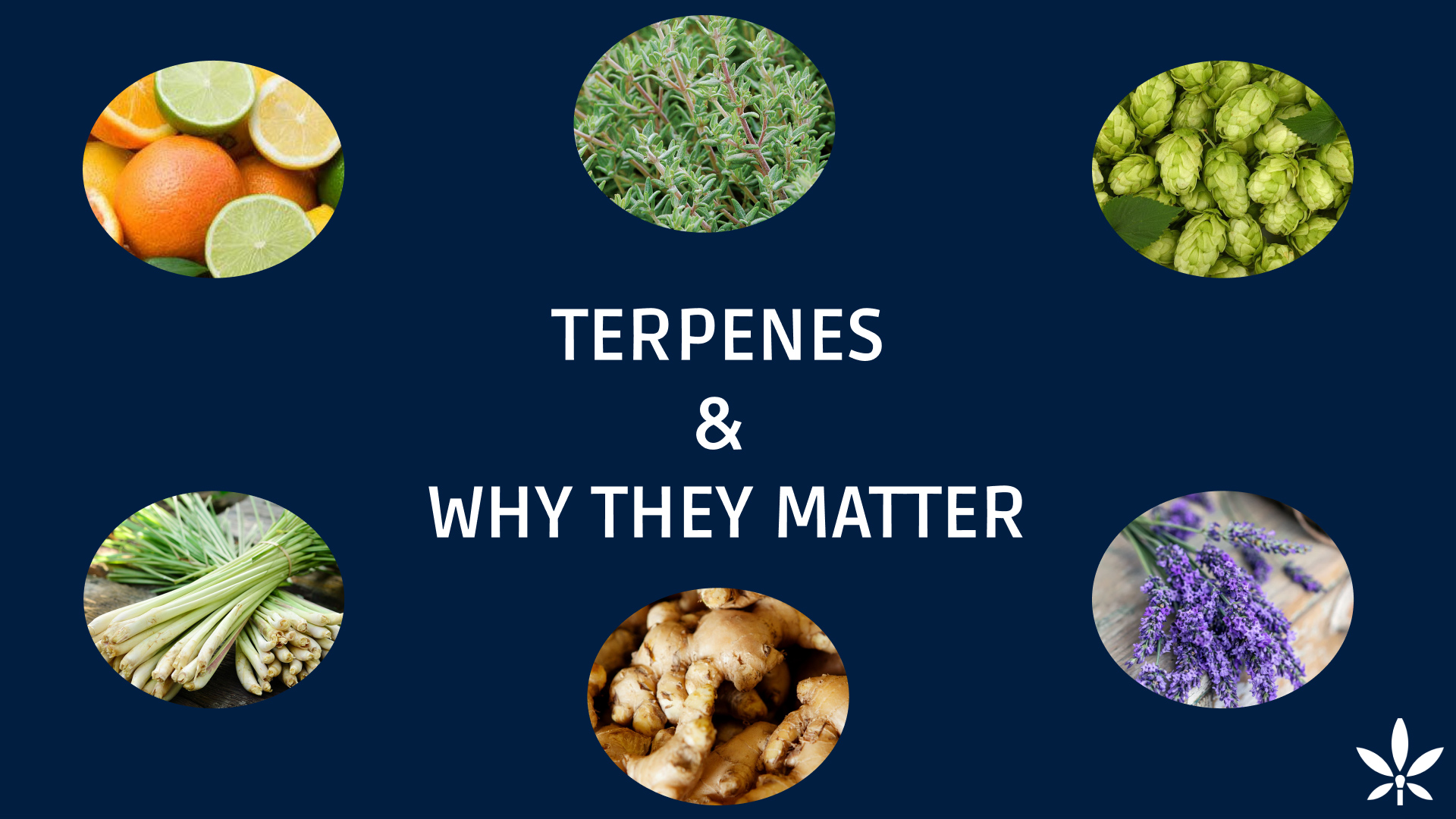
But what exactly are terpenes, why do they matter and how can the right blend of terpenes impact your cannabis experience?
In this post, we’ll delve into all the science and mysteries behind these potent little flavor and scent bombs so you can come away empowered to navigate the complex world of these magical compounds and make the most of your cannabis journey!
The Basics: What Are Terpenes?
Terpenes are naturally occurring compounds and they aren’t exclusive to cannabis; they can be found across various plants, spices, and herbs.
In cannabis, terpenes mainly contribute to the sensory dimension and act as aromatic architects determining the scent, flavor and even color of each strain.
With over 100 identified terpenes in cannabis, these compounds play a crucial role, not just in aroma but potentially in medicinal benefits.
Altering Your Experience
Terpenes are not cannabinoids. Meaning, while they do have psychoactive priorities, it’s not what’s getting you high. But they can alter the way cannabinoids interact with your brain and thus impact the type of high you feel.
For instance, beta-caryophyllene’s unique ability to bind to cannabinoid receptors, specifically CB2 receptors, hints at its potential for anxiety relief and stress reduction.
While THC often dominates the conversation, terpenes also have therapeutic effects such as enhancing mood, relieving stress, and even offering potential health benefits.
Terpenes vs Cannabinoids
Cannabinoids are the most recognized compounds in cannabis, with tetrahydrocannabinol (THC) and cannabidiol (CBD) being the most famous. THC is known for its psychoactive effects, creating the “high” associated with cannabis use. It achieves this by activating receptors in the body’s endocannabinoid system.
CBD, on the other hand, also interacts with the endocannabinoid system but does not produce euphoria. Instead, it’s known for its medicinal properties, influencing receptors differently from THC. Beyond THC and CBD, over 100 other cannabinoids exist in the cannabis plant, each contributing to the plant’s diverse therapeutic profile.
Terpenes are aromatic compounds but their role extends beyond scent; some terpenes also interact with the endocannabinoid system, but in a different way from cannabinoids. The body absorbs and utilizes terpenes in unique ways, contributing to the therapeutic and sensory experience of cannabis. They are not directly responsible for the psychoactive effects but can influence the overall effect of cannabis.
Terpenes and cannabinoids can work together to produce what is called the entourage effect. The entourage effect elevates the therapeutic properties of cannabis which is why many experienced budtenders will urge customers seeking specific body effects towards products with more robust, natural terpene profiles.
Much like CBD, specific terpenes influence the psychoactive impact of THC, potentially intensifying or modulating its effects. For example, limonene’s stress-reducing properties evoke an uplifting sensation, akin to the zesty joy of citrus.
Similarly, linalool, with its soothing floral essence, mirrors the tranquil effects of lavender essential oil, promoting relaxation.
Your exploration of strains and their terpene compositions can help you find the right profiles that uniquely fit your needs.
Most Common Cannabis Terpenes
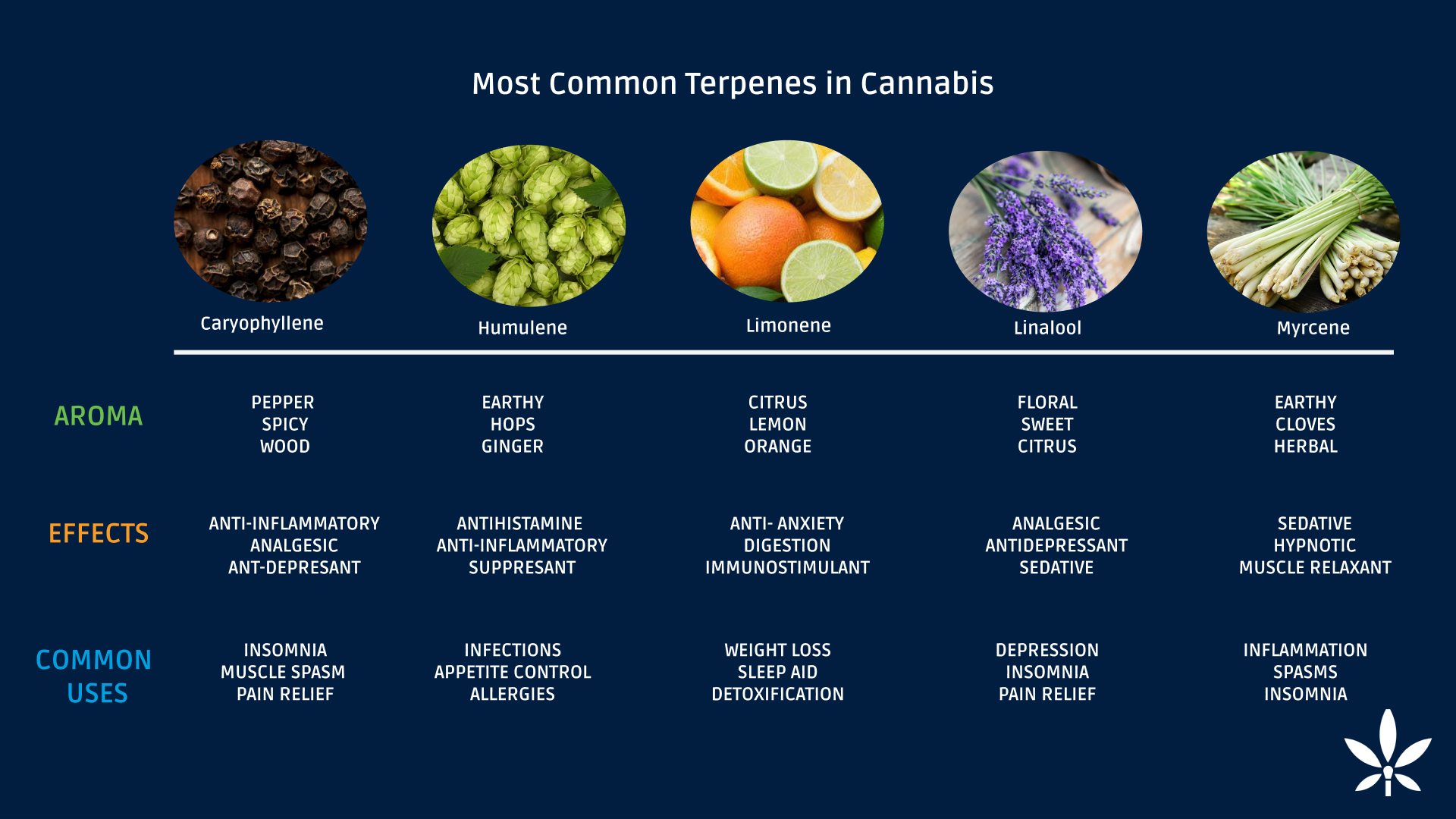
- Caryophyllene: Known for its spicy, peppery notes, caryophyllene is unique in acting like a cannabinoid. It may aid in stress relief and has been studied for its anti-inflammatory and analgesic effects, showing promise in treating chronic pain without developing tolerance. Found in herbs like cloves and black pepper, caryophyllene could be a key player in cannabis’s pain-relieving properties.
- Humulene: Recognizable by its earthy, hop-like aroma, humulene is prevalent in hops, clove, and ginger. Research in pharmacology indicates its potential in preventing allergic reactions and asthma, suggesting a role in reducing allergic inflammation in airways. Further studies also hint at its protective effect against cancer, though these findings are preliminary.
- Limonene: This citrusy terpene is more than just a mood lifter; it possesses significant therapeutic qualities. Studies note its anti-inflammatory, antioxidant, antiviral, antidiabetic, and even anticancer properties. Limonene modulates immune cell behavior, making it a potent supplement for overall health and a key ingredient in enhancing the therapeutic profile of cannabis.
- Linalool: Most abundant in lavender, linalool’s floral aroma is synonymous with relaxation. It’s often used in aromatherapy for its calming effects. Scientific research credits linalool with a range of properties, including anti-inflammatory, antimicrobial, neuroprotective, antidepressant, anticancer, and anti-anxiety effects. These many benefits make linalool a crucial component in cannabis strains aimed at relaxation and stress relief.
- Myrcene: Found in hops, lemongrass, and thyme, myrcene’s earthy and spicy profile is a staple in many cannabis strains. As a powerful antioxidant, myrcene has shown potential in protecting the brain and heart from oxidative damage and may be beneficial in conditions like osteoarthritis due to its anti-inflammatory properties. This makes myrcene-rich cannabis strains particularly interesting for their potential therapeutic effects.
While these five terpenes are among the most known in cannabis, the plant’s terpene profile is vast, including others like geraniol, terpinolene, ocimene, nerolidol, and phytol.
Each contributes uniquely to cannabis’s complex bouquet and therapeutic potential. Understanding these terpenes enhances not only the sensory enjoyment of cannabis but also informs choices for specific wellness goals, making the exploration of cannabis an ever-evolving journey.

More Exploration Ahead
The interplay between terpenes and cannabinoids opens up avenues for not only enhanced recreational experiences but also for exploring holistic approaches to health and wellness. The potential of terpenes to mitigate discomfort, improve mood, and enhance overall well-being makes them pivotal components in the future of cannabis use.
Whether for health or pleasure, the exploration of terpenes in cannabis is an exciting journey, one that promises to deepen our understanding and appreciation of this multifaceted plant.
The diverse aromas and flavors introduced by terpenes like limonene, myrcene, and linalool transform each use and cater to personal preferences and moods.
At nuEra, our experienced budtenders are trained to navigate the many benefits and effects of these magical compounds and can expertly guide customers towards the perfect blends to suit their needs.
FAQ
What are terpenes in cannabis and why are they important?
Terpenes are natural compounds that influence the unique aromas, flavors, and colors in cannabis. They can also have potential therapeutic benefits impacting factors such as mood enhancement, stress relief, and even offering health benefits.
How do terpenes differ from cannabinoids like THC and CBD?
While cannabinoids like THC and CBD are known for their psychoactive and medicinal properties, terpenes are aromatic compounds that also interact with the endocannabinoid system but in distinct ways. Unlike cannabinoids, terpenes are not psychoactive but can influence the effects of THC and CBD, causing the entourage effect in cannabis.
Can terpenes affect the type of high or therapeutic effects I experience from cannabis?
Yes, terpenes can influence the type of high or therapeutic effects of cannabis. They interact uniquely with cannabinoids to affect how the brain processes these compounds. For instance, some terpenes can enhance mood, reduce stress, and even modulate the psychoactive impact of THC, leading to a more tailored cannabis experience.
What are some common terpenes found in cannabis and their effects?
Common terpenes in cannabis include Caryophyllene (spicy, peppery, potential stress relief), Humulene (earthy, potential anti-inflammatory), Limonene (citrusy, mood-lifting), Linalool (floral, relaxing), and Myrcene (earthy, antioxidant). Each terpene has unique properties that contribute to the plant’s overall therapeutic impact, influencing aspects like aroma, taste, and potential health benefits.
How can I use my knowledge of terpenes to enhance my cannabis experience?
Understanding the terpenes present in different cannabis strains can help you select products that align with your desired effects, whether for recreation or health purposes.
At nuEra, experienced budtenders can guide you through the various terpene profiles, helping you find the perfect blend to suit your needs and enhance your overall cannabis journey.
Disclaimer: The information provided in this blog post regarding cannabis products, including medicinal uses of terpenes is intended for educational and informational purposes only. It should not be considered as medical advice. The effects of cannabis can vary greatly between individuals, and the information shared here may not be applicable or suitable for everyone. Always consult with a qualified healthcare professional or a licensed medical cannabis practitioner before making any changes to your cannabis consumption habits, especially if you have health concerns or are using cannabis for medicinal purposes. The legal status and regulations around cannabis consumption vary by region; please ensure you are compliant with local laws regarding cannabis use. This blog does not endorse or encourage the use or misuse of cannabis.



